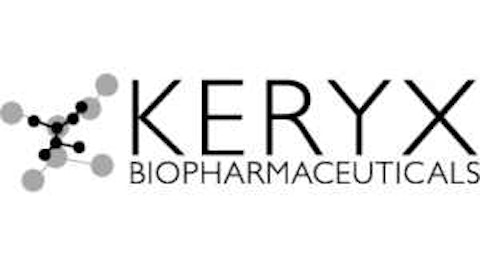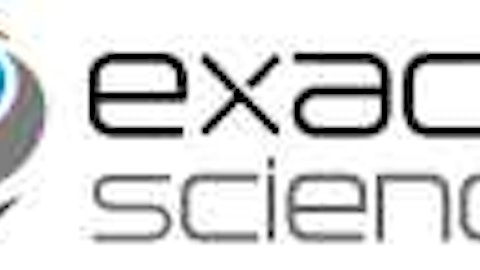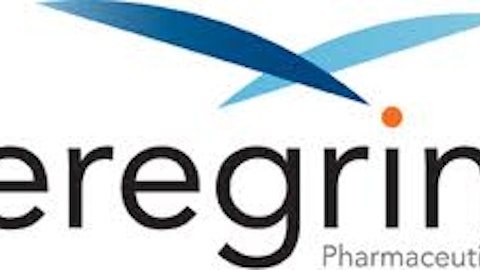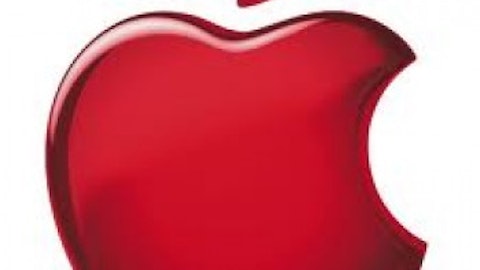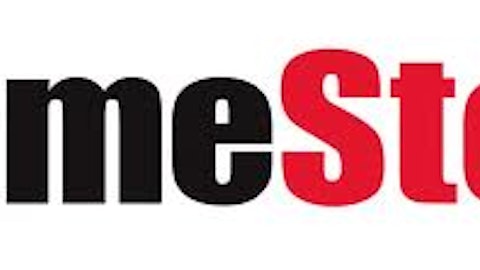In the world of small biotech companies, investors are always fishing for the next small fish to be gobbled up by a bigger one since the industry is well-known for its hefty acquisition premiums. Viropharma Inc (NASDAQ:VPHM), the manufacturer of hereditary angioedema, or HAE, treatment Cinryze, could be one of these elusive little fish.
Shares of Viropharma Inc (NASDAQ:VPHM) recently soared nearly 30% on buyout chatter. The company received an unsolicited buyout offer, after which it hired Goldman Sachs to explore the possibility of a sale to other potential suitors. Pharmaceutical giants Sanofi SA (ADR) (NYSE:SNY) and Shire PLC (ADR) (NASDAQ:SHPG) are two of the companies that are reportedly interested in taking the over the company, which has a market cap of $2.6 billion.
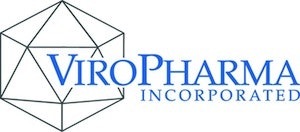
ViroPharma sells a very expensive drug for a very rare disease
Viropharma Inc (NASDAQ:VPHM)’s business is quite simple to understand since it only has four approved drugs on the market — Cinryze (HAE), Vancocin (for clostridium difficile), Buccolam (for seizures in children and adolescents), and Plenadren (for adrenal insufficiency in adults).
Out of these four drugs, Cinryze is the most important by far, as it accounted for 76% of the company’s total revenue in 2012. Last quarter, sales rose 23% from the prior year quarter to $95 million and accounted for a whopping 91.3% of the company’s top line.
Cinryze is one of only four HAE treatments on the market today. HAE is a rare debilitating disease that causes swelling of the face, extremities, genitals, intestines, and respiratory system. It affects only one in every 10,000 to 50,000 people. Due to the rarity of the disease, Cinryze is protected as an orphan drug until 2015 and is one of the world’s most expensive drugs at $350,000 per year per patient.
Last quarter, Viropharma Inc (NASDAQ:VPHM)’s revenue climbed 10% year-on-year to $10.37 million, although the company remains unprofitable. In addition to its four marketed drugs, it also has a pipeline of experimental treatments for cytomegalovirus infection, clostridium difficile-associated diarrhea, and Friederich’s Ataxia.
ViroPharma and Halozyme’s subcutaneous flop
One major disadvantage of Cinryze is that it is administered intravenously. Intravenous treatments take much longer to administer than subcutaneous injections.
Of the four main HAE medications, only Dyax‘s Kalbitor and Shire PLC (ADR) (NASDAQ:SHPG)’s Firazyr can be administered subcutaneously for patients over 16 and 18 years old, respectively. However, both Kalbitor and Firazyr are treatments for acute HAE attacks when they occur, whereas Cinryze is approved as a preventative measure. Because of this, Kalbitor and Firazyr should not be considered direct competitors to Cinryze but are rather parallel treatments.
In the past, Viropharma Inc (NASDAQ:VPHM) attempted to make a subcutaneous version of Cinryze with recombinant human enzyme maker Halozyme Therapeutics, Inc. (NASDAQ:HALO). However, ViroPharma canceled the phase 2 trial in August after a combination of Halozyme’s rHuPH20 and Cinryze caused patients to develop antibodies against the enzyme, as this could lead to other adverse effects. The problem had already been identified previously by the FDA last August when it temporarily halted the study.
For ViroPharma, the canceled trial was more of a speed bump — investors were simply disappointed that a more convenient, faster version of Cinryze was far from becoming a reality. For Halozyme, however, the implications were more damaging since it cast doubts on the safety and sustainability of its recombinant human enzyme technology. Halozyme Therapeutics, Inc. (NASDAQ:HALO) also has major collaborations with Roche, Pfizer, Baxter, and Intrexon.
Who should buy ViroPharma?
Let’s take a look at the key numbers behind Sanofi SA (ADR) (NYSE:SNY) and Shire PLC (ADR) (NASDAQ:SHPG), the two companies rumored to be interested in acquiring ViroPharma, compared to its target company.
| Cash and Equivalents | Total Debt | Debt-to-Equity Ratio | Operating Cash Flow | Qty.Revenue Growth (y-o-y) | |
| Sanofi | 5.52 billion | 18.98 billion | 26.09 | 7.60 billion | (11.30%) |
| Shire | 1.30 billion | 1.10 billion | 28.71 | 1.08 billion | 5.50% |
| ViroPharma | 258.73 million | 168.13 million | 23.69 | (22.60 million) | 9.60% |
Source: Yahoo! Finance, as of Sept. 15.
It would definitely be easier for Sanofi SA (ADR) (NYSE:SNY), being a much larger company than Shire PLC (ADR) (NASDAQ:SHPG) with a market cap of $127 billion compared to $22 billion, to acquire ViroPharma with its higher cash reserves and operating cash flow.
